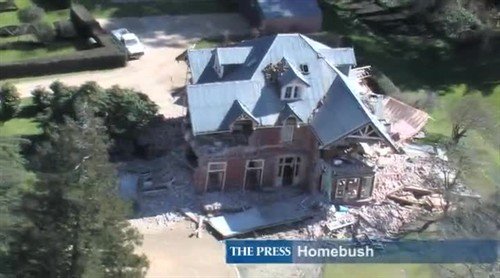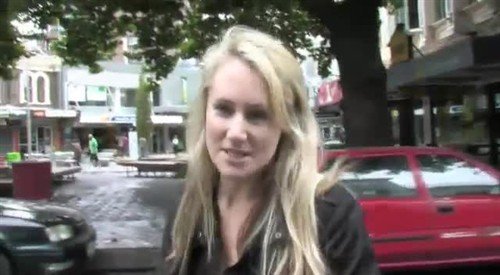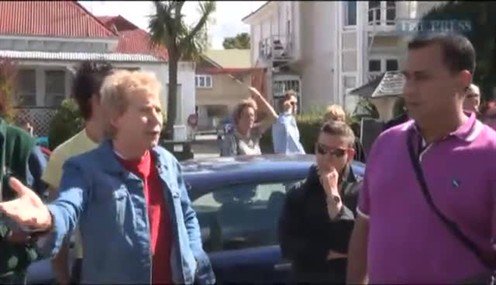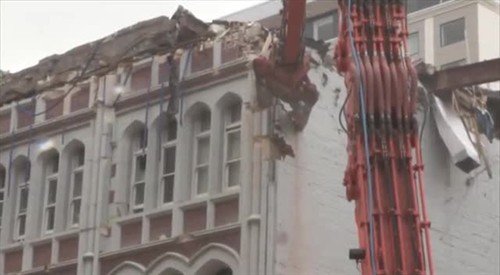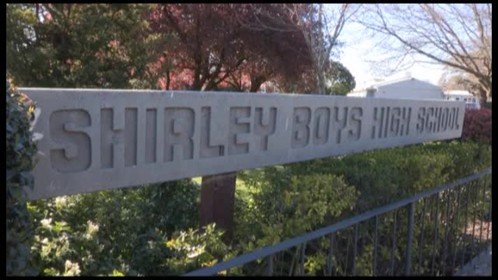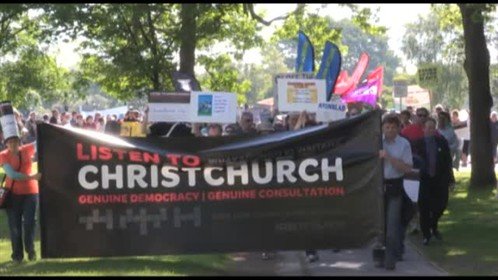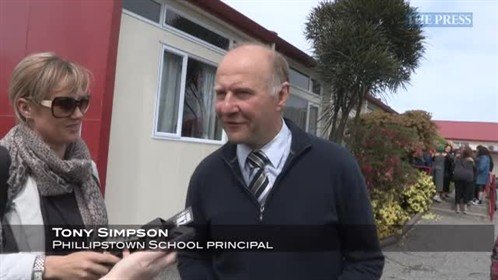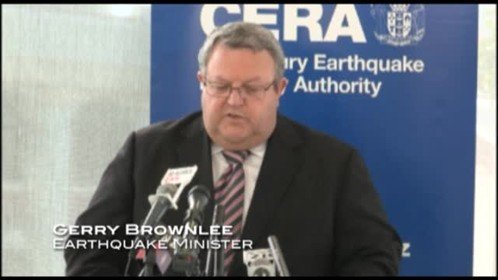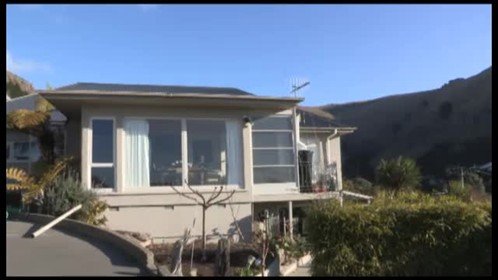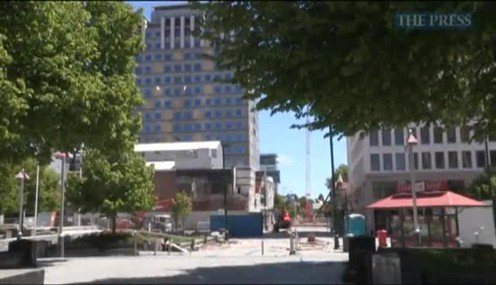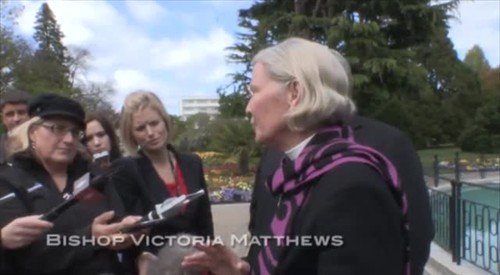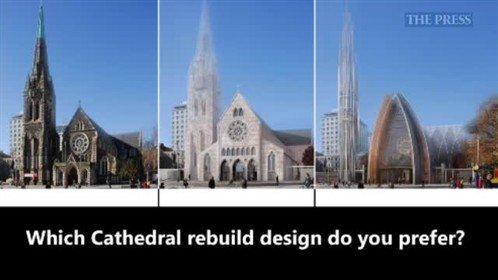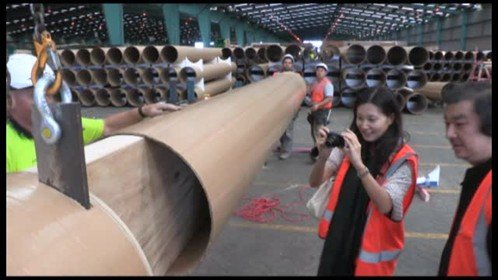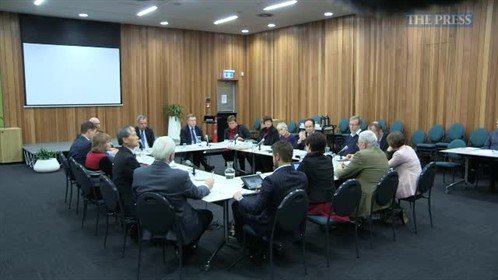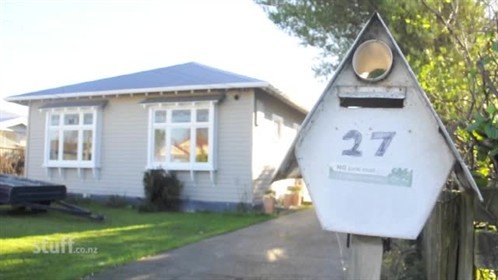Fairfax Collection Now in Motion
Today marks the completion of a milestone for CEISMIC, with over 300 videos added to the Fairfax Collection in UC QuakeStudies. The videos were shot by staff at The Press from 2010 to 2014 and made available on the news website www.press.co.nz.
Located on Gloucester Street, The Press is at the centre of the Christchurch rebuild and the biggest daily news publication in the South Island. With their focus on local news, the videos in this collection offer a detailed view of the 2010 and 2011 Canterbury earthquakes, documenting not only the initial event, but the wide range of ways that the earthquakes have affected people’s lives.
Many videos are directly related to the earthquake, detailing the damage caused by the earthquakes, and the experiences of the survivors:
Aerial footage of Canterbury and the Christchurch central city after the 4 September 2010 earthquake. The footage shows the earthquake damage to Homebush, St John's Church in Hororata, the railway tracks near Rolleston, and Westende Jewellers on Colombo Street. It also shows flooding in the streets of New Brighton.
A video of the Christchurch central city recorded shortly after the 22 February 2011 earthquake. In the video, Press reporter Olivia Carville describes the experiences of people within the central city.
They also cover the aftermath of the earthquakes, documenting the loss of historic places in Canterbury (including The Press’s very own building), as well as the challenges faced by businesses and communities:
A video of business owners outside the Christchurch Art Gallery protesting the lack of access to their buildings in the Red Zone.
A video of the demolition of the former Press Building in Cathedral Square. The Press Building was severely damaged during the 22 February 2011 earthquake
As the years move on, the effects of the earthquakes become deeper, broadening out to become new categories in and of themselves. One of these is the Education Shake-Up, where the Ministry of Education proposed the closure or merging of 57 Christchurch schools. Videos about the Shake-Up show the effect the decisions had on the community, the protests conducted by teachers and students, and the outcome of some of these protests:
A video of an interview with John Laurenson, Principal at Shirley Boys' High School, about the Government announcement of a possible merger of Shirley Boys' and Christchurch Boys' High Schools. Laurenson talks about how the announcement has upset the Shirley community.
A video of the Listen to Christchurch march which protested the government's proposed school closures in Christchurch.
Video about the Supreme Court’s decision that the merging of Phillipstown and Woolston is unlawful.
Another important topic is the Christchurch central city and residential red zones. Both zones were created after the 22 February 2011 earthquake – the first to keep people out of the dangerous central city, and the other to determine which parts of the city would not be rebuilt. Videos in this collection detail CERA’s decisions about the red zones, the experiences of people affected by these decisions, and Christchurch’s changing landscapes:
A video about the rezoning of 252 residential properties in the central city, Richmond, and Linwood. The video includes footage of Earthquake Recovery Minister Gerry Brownlee announcing the rezoning at a CERA press conference. It also includes an interview with Lynn Anderson, whose central city property was rezoned red.
A video of interviews with three residents about their Port Hills properties. The video was filmed the day after Earthquake Recovery Minister Gerry Brownlee announced the red-zoning of 285 Port Hills properties.
A video of a tour through the Christchurch central city Red Zone. The video includes footage of Cathedral Square, Hereford Street, the Hotel Grand Chancellor, High Street mall, Gloucester Street, Worcester Street, Latimer Square, and AMI House.
There are also many videos about the debate surrounding the restoration of the ChristChurch Cathedral. Seen by many as the symbol of Christchurch, the cathedral was severely damaged during the 22 February 2011 earthquake and is believed to be beyond repair. The decision to deconstruct the Cathedral has polarised people and caused a huge amount of debate. Currently, this collection shows the beginnings of this debate, with videos about the deconstruction of the cathedral, the restoration options presented by the Anglican Church, and the Transitional Cathedral built on Hereford Street:
A video of a press conference with Anglican Bishop Victoria Matthews and Dean Peter Beck, about the interim plans for the earthquake-damaged ChristChurch Cathedral. In the press conference Matthews announces that the Cathedral will be deconsecrated, that parts of it will be demolished, and that the rest will be made safe.
A video of interviews with members of the public about which option they prefer for the restoration of the ChristChurch Cathedral.
A video of architect Shigeru Ban overseeing the construction of the cardboard beams which will be used to build the Transitional Cathedral on Hereford Street. The video includes an interview with Ban about the beams, and the ways that the design has changed since the construction started.
Some topics are related to the earthquakes in more subtle ways, such as consent crisis at the Christchurch City Council, or the flooding of the Floxton Basin. These events were not necessarily caused by the earthquakes, but are relevant in how they affected the rebuild, or the recovery of individuals in post-quake Christchurch:
A video of the Christchurch City Council meeting to discuss its consenting process. The meeting was called after the council received a letter from International Accreditation New Zealand (IANZ) on 30 May 2013. The letter states that the Council has until 28 June 2013 to improve its processes or it will be stripped of its accreditation as a building consent authority.
A video of an interview with Hamish Griffen and Leila Chrystall about their property in the Flockton Basin. Griffen and Chrystall had to leave their house after the flooding made it unliveable. This video was part of a series of videos about residents in the flood-prone Flockton Basin.
What is most noticeable when looking through these videos is the way that the earthquakes have become entwined with daily life in Canterbury, affecting almost every sector, activity, community, individual, business, and landscape in the region. The story has moved from destruction and suffering, to debate and rebuild, following the path of a city recovering from New Zealand’s largest natural disaster. But it doesn’t stop there – for better or worse this event is part of the fabric of this city and will continue to be for many years to come. It will continue to shape our lives, and our decisions. It is fantastic to know that The Press will continue to document that process.

